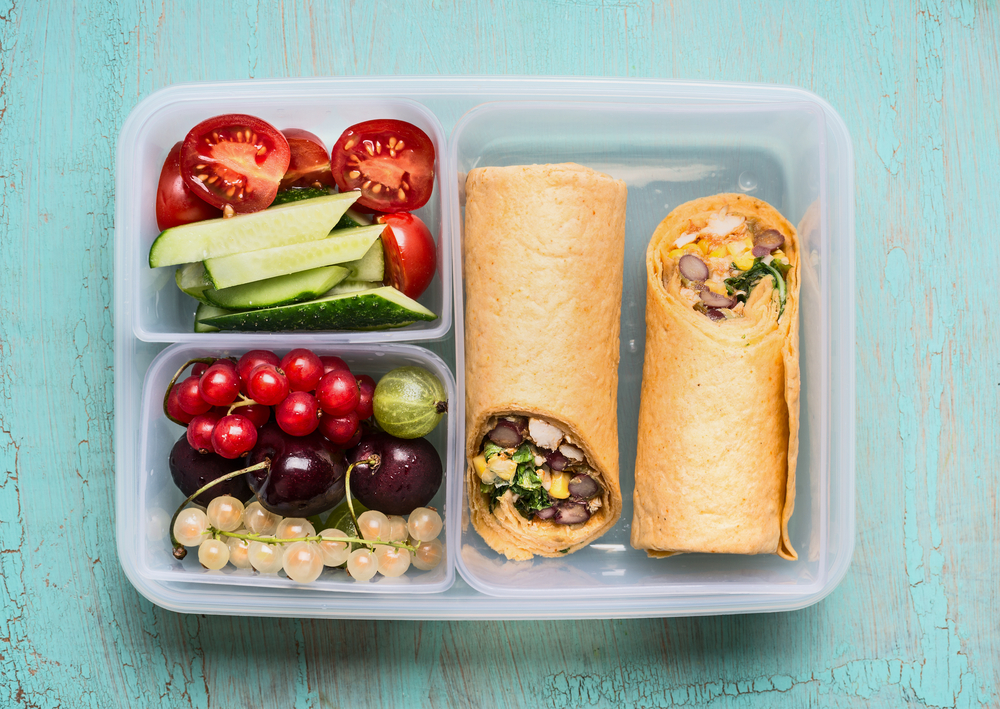By Andy Di Santis, Registered Dietician
The start of the school year can be a hectic time for families. Between pick-ups, drop offs, homework and extracurricular activities, you could hardly be blamed for being crunched for time on a regular basis.
There’s no doubt that time management and priority setting are crucial activities at this time of year, and my hope is that healthy eating, including packing a healthy lunch for your child, finds its way close to the top of that priority list.
I understand that this may be easier to say than to practically achieve.
That’s where I come in! In today’s article I will breakdown how to plan out your child’s school lunches in a straightforward manner and give you some great healthy snack ideas to support a balanced diet and productive day for your kids.
What does a balanced lunch box look like?
As a nutrition professional, I believe your child’s lunch should be comprised of 3 primary components:
1. A Fruit and/or Veggie
Fruits and vegetables are the most nutrient dense and important components of the human diet.
Although veggies at lunch may be a hard sell for some kids, if you can convince your child to incorporate some form of vegetable at lunchtime, that would be a huge win.
Cherry tomatoes, baby carrots and bell pepper slices are all easy, convenient options.
If veggies at lunch are a no-go, a piece of fruit (or about ½ a cup of fruit if it is something like grapes, berries or pineapple) is your next best bet.
Whole fruits with skin intact like apple or pear slices are a great choice, as are bananas, oranges and berries and just about any other fruit under the sun!
I do recommend, however, sticking to whole fruits most of the time while minimizing juices and fruit that has been canned or dried.
2. A Whole Grain or Starchy Vegetable
Depending on your family meal dynamic and child’s preferences, you will probably either end up packing leftovers from last night’s dinner or make a fresh lunch for the day.
Two slices of good old fashioned whole grain bread or a whole grain pita will do the trick but other whole grain options like quinoa, brown rice and corn all make great choices.
Potatoes and sweet potatoes, with their skin intact, work well too.
I recommended aiming for a serving size that measures about the size of your fist, although some kids may desire more or less depending on their age, appetite and energy needs.
3. A Protein or Protein Alternative
Complete your child’s lunch with a protein source such as 2 tbsp of hummus or all natural peanut butter, minimally processed chicken/turkey or roast beef slices ( avoid heavily processed meats like ham, bologna, etc), a small can of tuna or dinner leftovers such as meat or legumes ( like lentils, chickpeas etc) from last night’s dinner.
Keeping these 3 components in mind when planning your child’s school lunches should help simplify the process while ensuring that your kids are enjoying extremely nutritious meals every single day at school.
There is, however, more to a healthy day of school eating than just a packed lunch. You will also want to ensure that your kids are sent to school with at least one or two healthy snack options to help keep them fueled throughout the day.
Healthy School Snack Ideas
Depending on your child’s needs and preferences, you can mix/match some of the following healthy snack options:
0% MF Greek Yogurt Cups
Any piece of whole fruit
Sunflower Seeds
Carrots & Hummus
Granola Bars ( Kashi Honey Flax or All Bran)
Cheerios or All-Bran Flakes
Plain Popcorn
Final Thoughts
There you have it folks! I hope that today’s article has provided some valuable insights into what makes a healthy, balanced lunch meal and also helped to simplify the meal planning process for your kids this school year. I appreciate how important it is to keep your household running as efficiently as possible while still keeping your kids well fed and well nourished.






